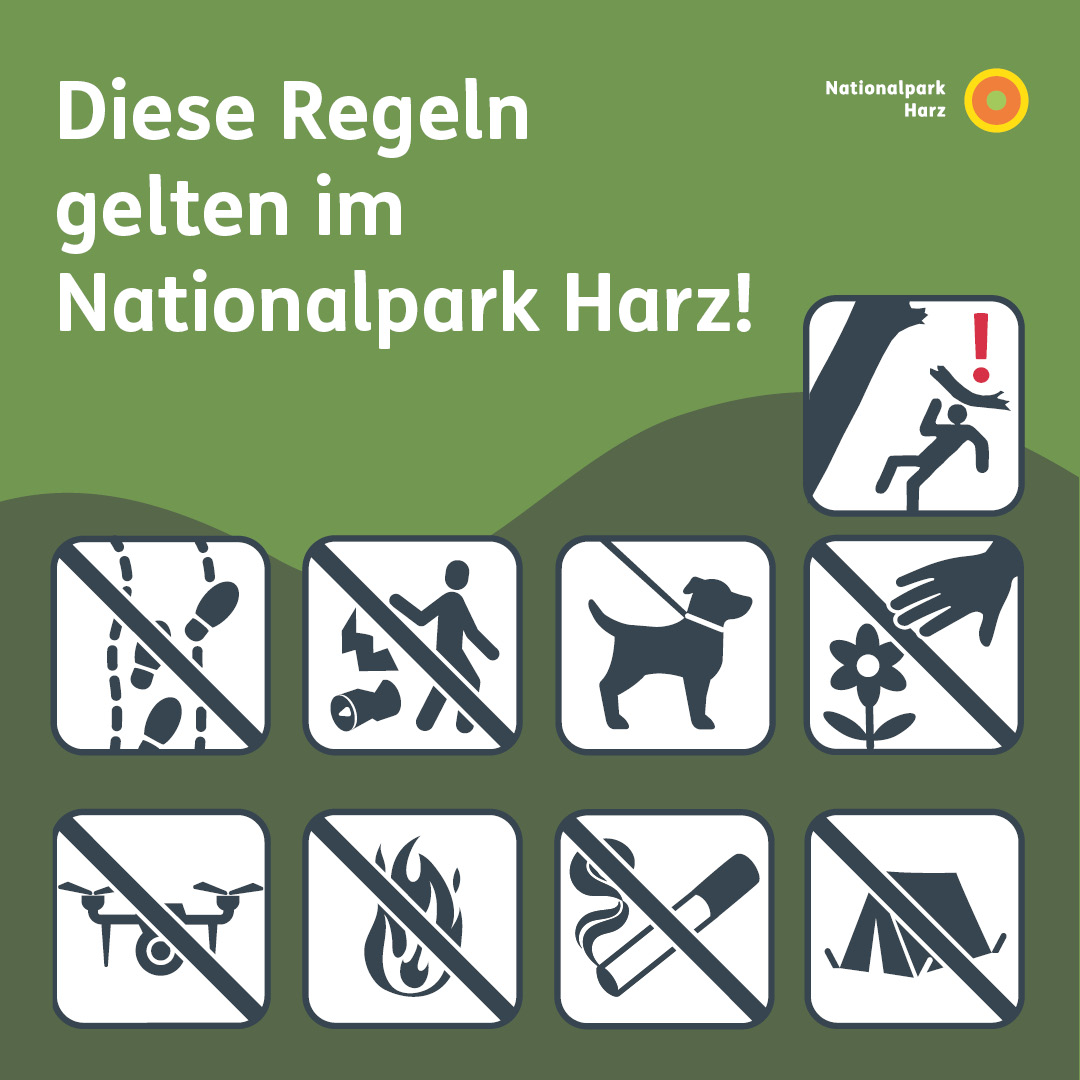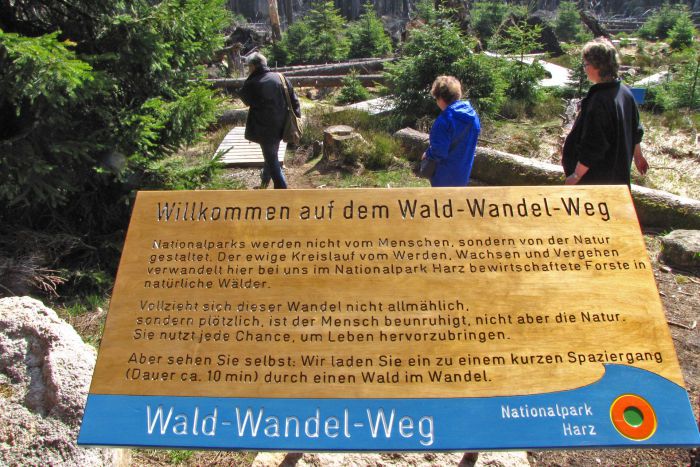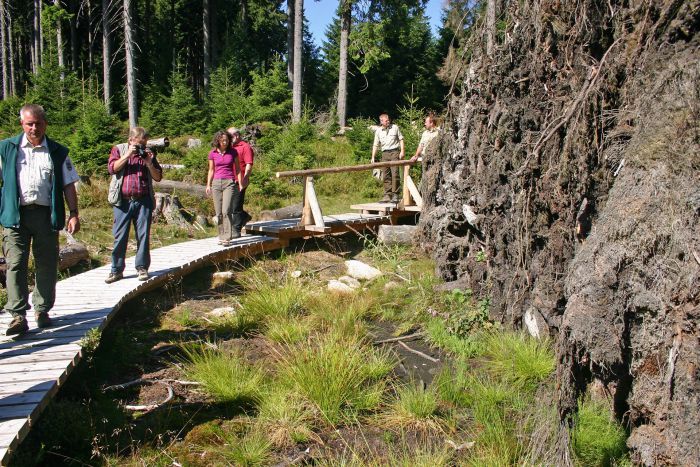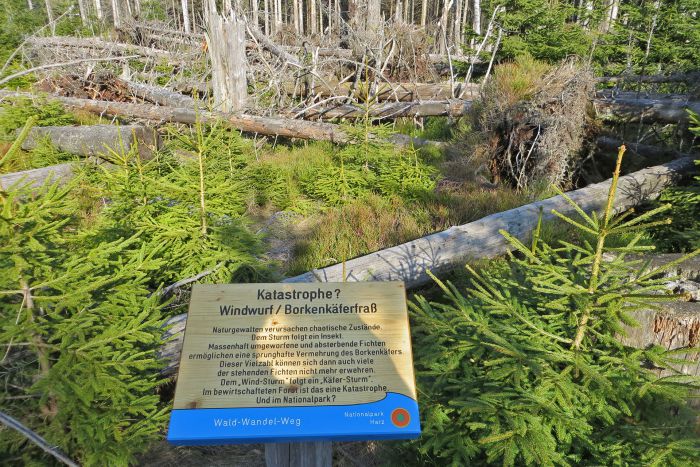Torfhaus forest development path and Quitschenberg information point
Around Torfhaus you can get an idea what the forests of the Harz will look like in the future
We humans often have problems accepting that the forests would do just fine without us. During the cycle of development, growth and decay these forests formerly cultivated by man turn into natural forests. When this transformation happens quickly, humans are worried, nature, however, is not. Nature remains calm and takes every chance to create life.
This process can be witnessed on our forest transition path at Schubenstein near Torfhaus. At 180 m you can see the "primeval forest of tomorrow". From the TorfHaus National Park Visitor Centre (website in German) it only takes 1.5 kilometres to reach it.
Information point Quitschenberg
The information point at Quitschenberg can be reached easily from the National Park Visitor Centre. On their way from Torfhaus to the Brocken many hikers wonder what has happened to the forest. In 1992 a storm swept across the Harz and knocked down the spruce forest in a small area. It was decided not to "tidy up" the forest since the designation of the Harz as a national park was already planned. You may ask why nothing had been done and what this forest looks like nowadays. Do you have to worry or is it a forest of hope? You will find the answer at the information point.





